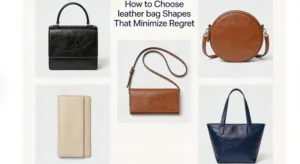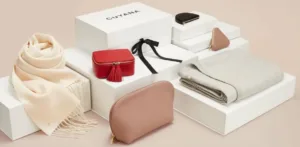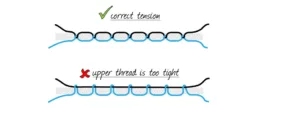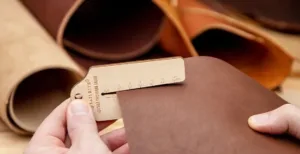For professional men, a leather briefcase is more than just a practical accessory—it’s a reflection of brand identity, personal organization, and professional standards. Yet, one of the most common challenges buyers face during sourcing or customization is selecting the wrong size: a briefcase that’s too large can appear bulky and inconvenient to carry, while one that’s too small may fail to accommodate essentials like a laptop, documents, or chargers.
This guide is designed to support your procurement decisions by helping you or your clients avoid these common pitfalls. Whether the end user is a daily commuter, a minimalist executive, or a frequent business traveler, we provide a clear framework to help you identify the ideal size, structure, and layout. Our goal is to ensure every leather briefcase delivers not only style and professionalism but also optimal functionality aligned with the user’s work routine and your brand’s positioning.
Contents
- 1 Step 1: For Your Clients’ Daily Needs: Matching Briefcase Size to Their Lifestyle
- 2 Step 2: Common Briefcase Sizes and Their Ideal Use Cases
- 3 Step 3: How to Measure the Right Fit of Leather Briefcase for Men
- 4 Step 4: Match Your Size & Style
- 5 Step 5:Other Key Factors Influencing Leather Briefcase Size Selection
- 6 Conclusion
Step 1: For Your Clients’ Daily Needs: Matching Briefcase Size to Their Lifestyle
Test the daily carrying needs of your target users thoroughly before selecting the right size leather briefcase for clients or brands. Understanding the professional roles and lifestyles of your end users is crucial, as capacity requirements vary significantly—whether they are corporate professionals, creative designers, sales representatives, or entrepreneurs, the types and quantities of items they carry differ widely.
For urban commuters, a compact and lightweight small-sized briefcase typically suffices to hold essentials such as a laptop, documents, phone, and basic accessories. However, frequent business travelers require greater capacity and well-organized compartments to neatly accommodate travel documents, spare clothing, chargers, and various accessories.
By carefully assessing these daily usage scenarios and inventory of items, you can avoid size mismatches and ensure the chosen leather briefcase offers the optimal combination of functionality, comfort, and professional style.
Before selecting a leather briefcase for your business or clientele, it is important to carefully evaluate daily usage requirements by asking key questions. This ensures the chosen product aligns precisely with end users’ professional needs and avoids issues related to inappropriate sizing. Below are the frequently asked questions and the table results of the survey:
1. Does the user carry a laptop on a daily basis? If so, what are the exact dimensions?
2. Is there a need to accommodate A4-sized documents, folders, or notebooks regularly?
3. Are electronic accessories such as power banks, mice, headphones, or charging cables commonly carried?
4. Will the user typically carry additional items like books or magazines?
5. What personal essentials—such as key pouches, wallets, water bottles, or sunglasses—need to be factored into the carrying capacity?
| Items Men’s Carry | Recommended Briefcase Size | Notes |
|---|---|---|
| 13″ laptop, notebook, phone, keys | Small (under 13 inches) | Ideal for minimalist commuters with a sleek appearance |
| 14–15.6″ laptop, A4 folders, accessories | Medium (14–15.6 inches) | Best for business commuters; balances space and size |
| 15.6″+ laptop, thick folders, magazines, water bottle | Large (16 inches and above) | Suitable for business travel or full-day mobile work |
| With charger, mouse, tablet, extra tech gear | Medium to Large | Look for multi-compartment designs to stay organized |
| Tablet + small notebook + basic office supplies | Small to Medium | Great if you don’t carry a laptop—light and efficient |
Step 2: Common Briefcase Sizes and Their Ideal Use Cases

Selecting the appropriate size leather briefcase not only enhances user comfort but also aligns more effectively with your professional requirements and business lifestyle. Below are the three most common briefcase sizes on the market and their typical application scenarios:
Small Size (13 Inches and Below)
Designed primarily for professionals with light office needs and a minimalist approach, this size accommodates laptops up to 13 inches along with essentials such as phones, keys, a few documents, and basic accessories. Its lightweight construction and sleek design make it ideal for urban commuting, short-duration work, and light business activities, providing efficient and convenient daily functionality.
Medium Size (14 to 15.6 Inches)
This size targets the majority of white-collar professionals and business users, offering ample space for laptops between 14 and 15.6 inches, A4 folders, chargers, tablets, and other daily office essentials. Balancing capacity and portability, medium-sized briefcases are well-suited for daily office commutes, client meetings, and business engagements that require carrying moderate amounts of materials efficiently.
Large Size (Above 15.6 Inches)
Large leather briefcases are designed for professionals such as lawyers, designers, and frequent business travelers who require substantial carrying capacity. They comfortably fit larger laptops, multiple thick folders, magazines, clothing, and various accessories. With spacious compartments and organized storage, these briefcases support full-day mobile work and extended travel, meeting the demands of versatile and intensive professional use.
Leather Briefcase for Men — Size & Use Case Reference

| Size Category | Typical Dimensions | Suitable For | Common Items Accommodated | Usage Scenario |
|---|---|---|---|---|
| Small | Up to 13 inches (W) | Minimalists, light office use | 13″ laptop, phone, keys, small notebook | City commuting, casual meetings |
| Medium | 14 – 15.6 inches (W) | Most white-collar professionals | 14-15.6″ laptop, A4 folders, chargers | Daily office, business visits |
| Large | 16 inches and above (W) | Lawyers, designers, and frequent travelers | Large laptops, thick folders, magazines, and clothes | Business travel, full-day mobile work |
Step 3: How to Measure the Right Fit of Leather Briefcase for Men

Have questions about how to choose the right Men’s leather briefcase size for your needs or clients? Start by accurately measuring the core items your users carry—especially laptops, A4 folders, tablets, and daily work accessories. Always refer to the interior dimensions of the briefcase, as the exterior measurements can be misleading due to leather thickness, lining, and internal padding.
Keep in mind that real leather bags often have slightly less usable space than expected. That’s why it’s important to leave some buffer room in your measurements—particularly for thicker devices, or if you’re designing bags with multiple compartments or built-in organizers.
If you’d like to learn more about our factory’s recommended measuring methods and get personalized support, click here to connect with our specialists. We’ll assist you in evaluating size compatibility and recommending the ideal structure and layout, ensuring each man’s leather briefcase strikes the perfect balance between utility and design.
Step 4: Match Your Size & Style

As a bag supplier, it is essential not only to focus on the size selection of men’s leather briefcases but also to proactively consider the body proportions and professional dress styles of your clients’ target users. Market research shows that approximately 65% of taller men (above 180 cm) prefer larger-capacity briefcases, which help maintain visual balance and convey a stable, professional, and authoritative image—especially suitable for formal business attire. In contrast, around 70% of shorter men (below 170 cm) tend to favor more compact and streamlined designs to avoid overwhelming their frame and disrupting the professional appearance. Selecting briefcases with clean lines and well-proportioned dimensions not only complements both formal suits and business casual wear but also enhances overall sophistication and confidence. By precisely aligning size and style, we can offer clients targeted and professional design recommendations that help them create practical products tailored to market demands, thereby improving end-user satisfaction and brand competitiveness.
Case Study: A well-known men’s briefcase retailer in Brazil approached Sunteam for design collaboration. During the design discussion phase, Sunteam’s sales representative, Cara, went beyond the product itself and proactively analyzed the body types of the retailer’s target customers. She found that Brazilian men generally have medium builds and place a higher emphasis on lightweight and practical briefcases. Based on these insights, Cara recommended adopting a slightly more compact shape while enhancing internal compartments for better organization of everyday essentials.
Although a subtle adjustment, this change brought tangible convenience and noticeable improvement to the client’s daily use, earning unanimous praise from both the Brazilian retailer and their customers. This case highlights Sunteam’s commitment to deeply understanding client needs and delivering professional, customized solutions, demonstrating our customer-centric approach and ability to accurately match target users in the global market.
Step 5:Other Key Factors Influencing Leather Briefcase Size Selection

Selecting the size of a leather briefcase, beyond understanding the client’s carrying needs and body proportions, several other factors must be taken into account. First, the bag’s structure plays a significant role—soft-sided briefcases generally offer more flexibility and efficient use of interior space, while hard-shell designs provide superior protection, appealing to users with higher demands for durability. Additionally, features such as expandable zippers and multi-layered compartments directly affect capacity and organizational versatility, catering to diverse user requirements. Moreover, the client’s commuting method significantly influences size preferences: those who walk or cycle tend to favor lightweight, compact designs, whereas drivers or subway commuters may opt for larger models to accommodate more belongings.
Beyond these considerations, market trends, brand positioning, customer budgets, and customization requests also impact the final size and design decisions. As a professional bag supplier, thoroughly understanding and integrating these multiple factors enables us to deliver more precise, competitive solutions, enhancing product fit and end-user satisfaction in the market.
Bag structure: Soft-sided bags offer flexibility, and hard-shell bags provide durability
Expansion features: Presence of zipper expansions or multiple compartments
Commute mode: Walking or cycling favors lightweight bags; driving or subway allows larger capacity
Market trends: Align with current styles and customer preferences
Brand positioning: Size design should match the brand image and the target audience
Budget constraints: Different sizes and features correspond to different cost levels
Customization needs: Adjust size and structure according to personalized client requirements
Conclusion
According to our experience working with clients worldwide, selecting the right size leather briefcase is essential for balancing functionality and professional style. A bag that’s too large or too small can compromise both daily usability and the perceived quality of your brand at the customer level.
We strongly encourage bag suppliers and brand owners to consider key factors such as user lifestyle, commuting habits, and body proportions when developing or sourcing leather briefcases. A well-matched size not only enhances practicality but also elevates the overall aesthetic and customer satisfaction.
Still unsure which size best fits your customers?
Explore our size guide or contact the Sunteam team for tailored manufacturing recommendations. We’re here to help you create leather briefcases for men that deliver both performance and polish.







